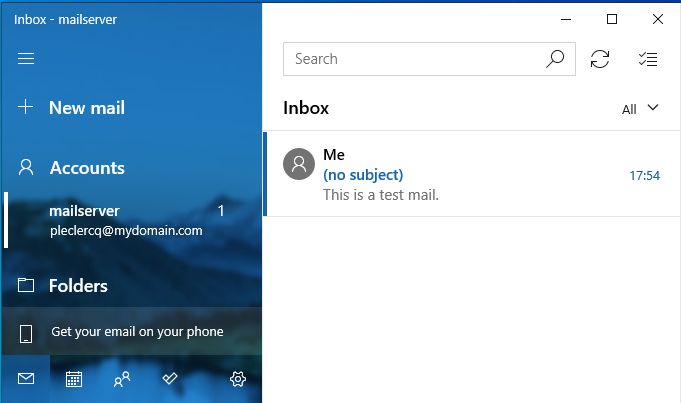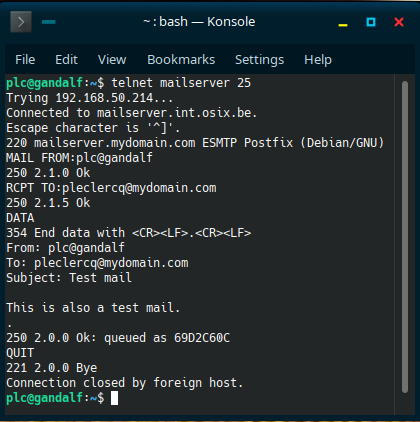SMTP
P.Leclercq in Security 2023-11-05 technology

SMTP: how your emails are transported
SMTP (Simple Mail Transport Protocol) is an Internet standard communication protocol for email transmission. SMTP describes how your emails are sent from your email client on your PC or phone, or your webmail interface, to their destination.
The email journey
The complete journey of an email can be represented as follows:

Some definitions:
- MUA: Mail User Agent: a mail client like Outlook, Thunderbird or Gmail, that the user uses to write and send his emails;
- MSA: Mail Submission Agent: the mail server part which communicates with the MTA, usually on TCP port 25 or 587 when using encryption, and delivers the mail to the MTA;
- MTA: Mail Transfer Agent: the mail server part which will determine where to send the email to the addressee. The MTA will lookup the DNS MX record for the domain part of the address of the recipient to find where to send the email;
- MX: Mail eXchange: the destination MTA;
- MDA: Mail Delivery Agent: the component that will store the received email in the recipient’s mailbox.
Note that several components can actually share the same server.
All the transmissions between the different agents happen via the SMTP protocol. The actual retrieval of the email by the recipient, though, is made by other means we will explain in future articles.
The email transmission language
Definition
As its name implies, SMTP is a protocol, i.e. a set of standardized commands and responses between the components so they can understand each others.
Seen from the MUA (the mail agent), this protocol is really very simple (as once again its name implies).
The protocol is based on 5 main commands:
HELO: used by the client to identify itself;MAIL FROM: used by the client to identify the sender;RCPT TO: used by the client to identify the recipient;DATA: introduces the real content of the email. The end of the data is marked by a line only containing a sigle dot (“.”).QUIT: closes the conversation.
Example
In the following example, we have simplified the infrastructure to the maximum. We have one client machine (gandalf) sending a mail to a user having an account on the mail server of the mydomain.com domain itself (mailserver). We will not use a real mail client; we will directly connect to the SMTP server port of the server and will type the SMTP commands manually.

The HELO, MAIL FROM, RCPT TO, DATA, QUIT commands and the lines between “354...” and “250 2.0.0 OK...” are typed from the client. These are exactly what your usual mail client transmits when you send a mail. The answers from the mail server begin with 3 digits.
Using a simple character based mail client on the mailserver server, we can read the following email content:

The data above the actual content text of the mail is called the mail headers. They give important technical details about the source and transmission path of the email. We will analyze these in a future article.
Using a graphical mail client (the mail application on Windows), this is what the received mail looks like:


Adding more details
As you can see above, the mail clients do not show a lot of details with only the minimum fields of the email filled.
Several Internet standards define the content of an email. Notably, the fields From:, To: and Subject: are defined and are used by mail clients to enrich the description of the email.
Here is an example of a more complete email and how it appears.




You can now clearly see the sender name (plc@gandalf), the recipient name (pleclercq@mydomain.com) and the subject.
Most mail clients actually add these fields when transmitting an email. Usually, when you configure them, they ask how you want your name to be displayed (“display name”) to fill the From: data field and they copy the RCPT TO header field into the To: data field.
In a future article, we will see how the existence of these data fields and the way they are displayed in a mail agent can sometimes be misleading and be used by attackers to confuse the recipient.